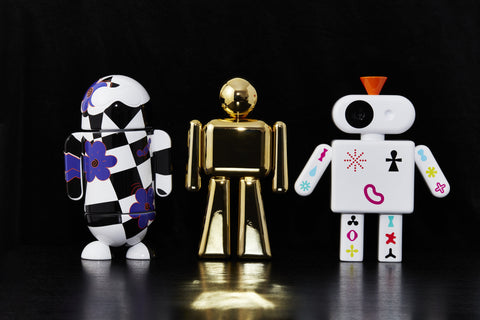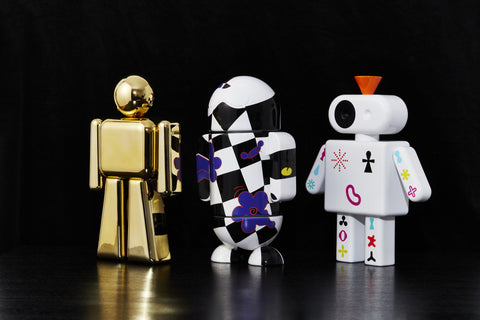Toys have always held a special place in human culture, serving as more than mere playthings but as vessels of imagination and creativity. Within the realm of toys, art toys stand out as unique expressions of artistic vision and cultural significance. In this blog post, we'll take a journey through the captivating history of art toys, tracing their origins, evolution, and enduring appeal.
From Folk Art to Mass Production
The roots of art toys can be traced back to ancient civilizations where handmade figurines and dolls were crafted for religious, ritualistic, or storytelling purposes. These early examples of folk art toys reflected the cultural beliefs and aesthetics of their creators, serving as both playthings and symbols of cultural identity.
In the late 19th century, the industrial revolution paved the way for mass-produced toys, marking a significant shift in the toy industry. Manufacturers began producing toys on a large scale, catering to the growing demand for affordable playthings. However, amidst the rise of mass production, artisanal toy makers continued to create unique and handcrafted toys, preserving the tradition of artistic expression within the toy industry.
The Rise of Designer Toys: Artistic Revival in the Modern Era
The late 20th century witnessed a resurgence of interest in artisanal craftsmanship and artistic expression, fueled by countercultural movements and the rise of urban art scenes. It was within this cultural landscape that the concept of designer toys emerged.
Designer toys, also known as art toys, are defined by their emphasis on creativity, originality, and limited production runs. Influenced by street art, graffiti, pop culture, and underground comics, designer toys encompass a wide range of styles, materials, and themes.
One of the pioneering figures in the designer toy movement is Michael Lau, who gained recognition in the 1990s for his hand-painted figurines that blurred the lines between art and toy. Other notable artists and designers, such as James Jarvis, KAWS, and Takashi Murakami, also made significant contributions to the development of designer toys, bringing their distinctive styles and artistic sensibilities to the medium.
Collectibility and Cult Status: The Art Toy Scene Today
In recent years, the art toy scene has grown exponentially, attracting collectors, enthusiasts, and artists from around the world. Limited edition releases, collaborations between artists and toy manufacturers, and curated exhibitions have further elevated the status of art toys as coveted collectibles and cultural artifacts.
Art toy conventions and festivals, such as DesignerCon and ToyCon, serve as vibrant hubs for the global art toy community, providing opportunities for artists to showcase their work, connect with fans, and celebrate the diversity of the medium.
The history of art toys is a testament to the enduring power of creativity, imagination, and play. From their humble origins as handmade figurines to their current status as sought-after collectibles, art toys continue to captivate audiences with their unique blend of artistic expression and toy design.
As the art toy scene continues to evolve and expand, one thing remains clear: art toys are more than just playthings; they are tangible manifestations of artistic vision, cultural identity, and the universal human desire to create and explore. Whether displayed on a collector's shelf or enjoyed by a child at play, art toys remind us of the transformative power of art and the boundless possibilities of the imagination.



